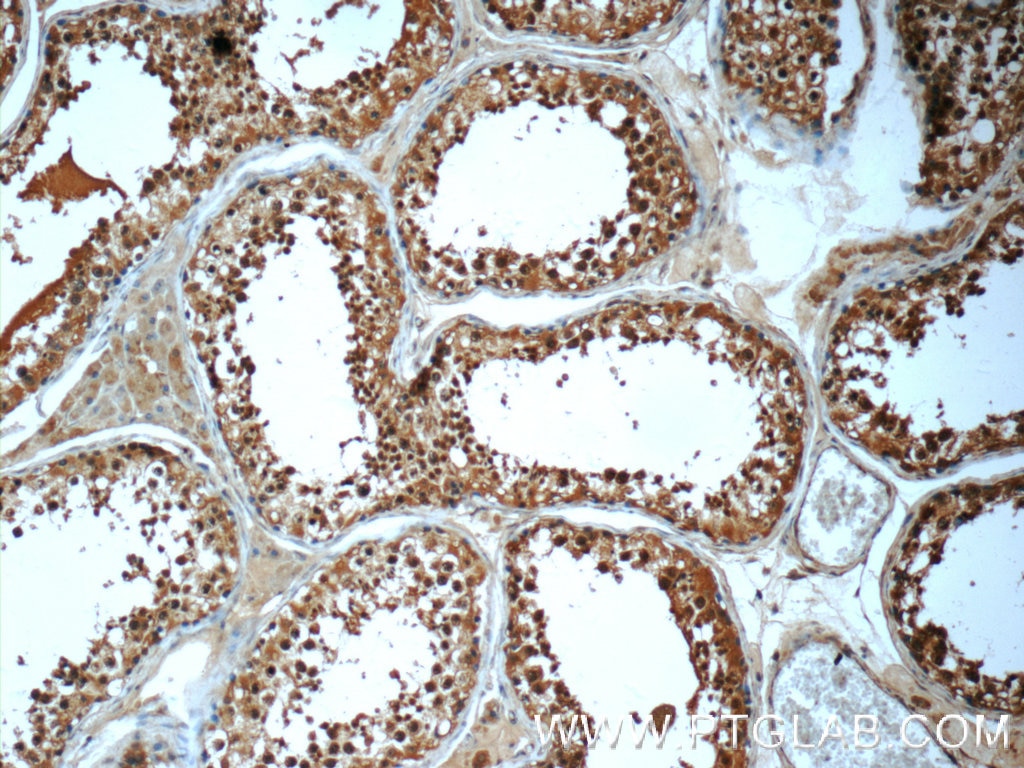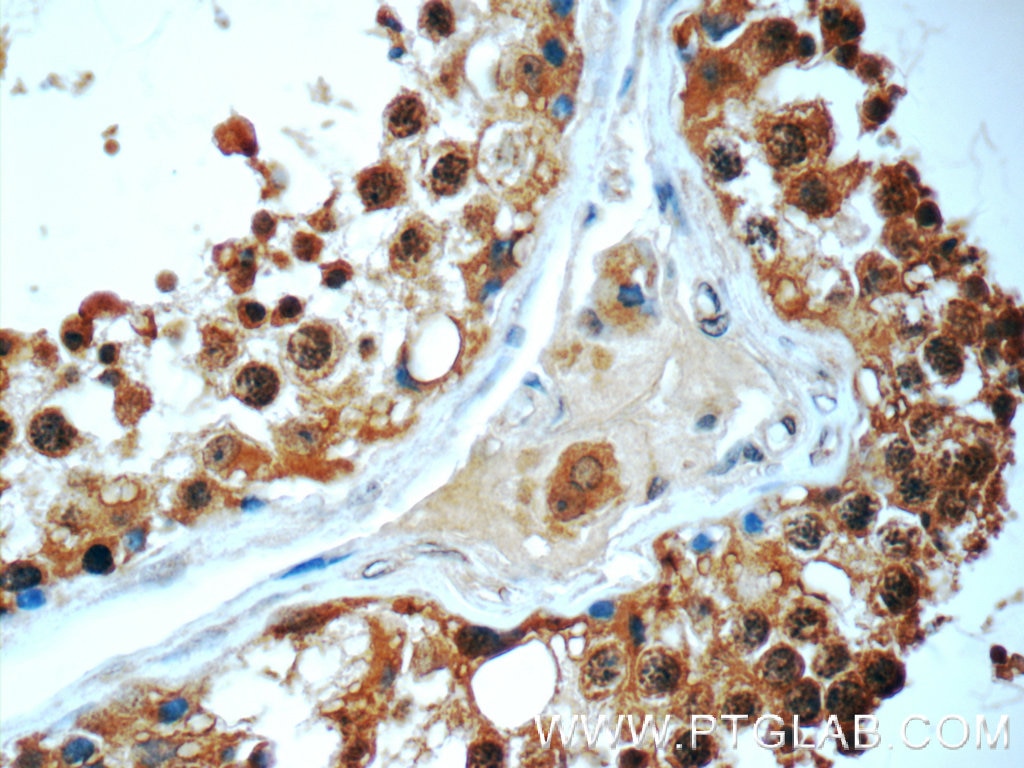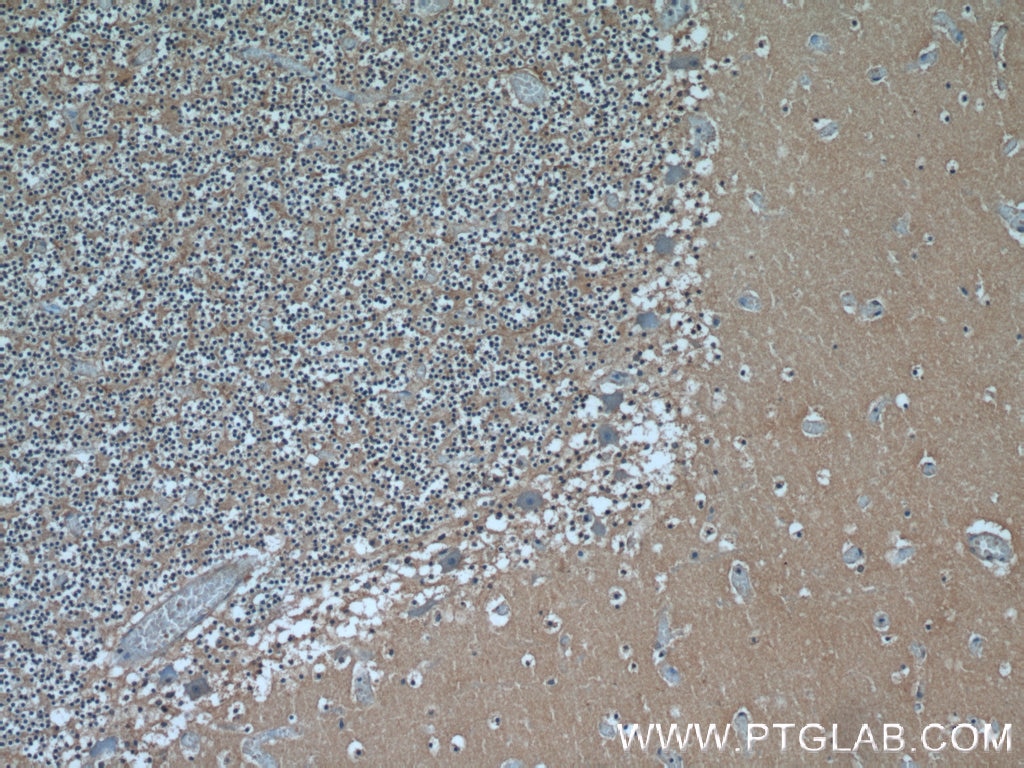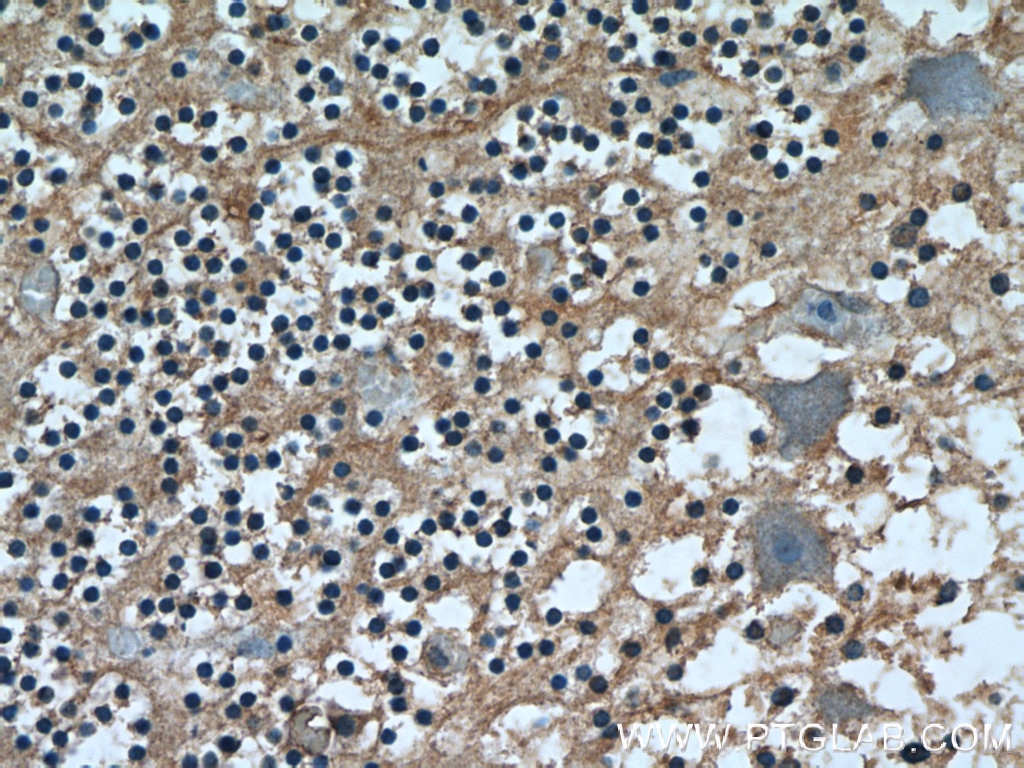HYDIN Polyklonaler Antikörper
HYDIN Polyklonal Antikörper für IHC, ELISA
Wirt / Isotyp
Kaninchen / IgG
Getestete Reaktivität
human und mehr (1)
Anwendung
IHC, IF, ELISA
Konjugation
Unkonjugiert
Kat-Nr. : 24741-1-AP
Synonyme
Geprüfte Anwendungen
| Erfolgreiche Detektion in IHC | humanes Hodengewebe, humanes Cerebellum-Gewebe Hinweis: Antigendemaskierung mit TE-Puffer pH 9,0 empfohlen. (*) Wahlweise kann die Antigendemaskierung auch mit Citratpuffer pH 6,0 erfolgen. |
Empfohlene Verdünnung
| Anwendung | Verdünnung |
|---|---|
| Immunhistochemie (IHC) | IHC : 1:20-1:200 |
| It is recommended that this reagent should be titrated in each testing system to obtain optimal results. | |
| Sample-dependent, check data in validation data gallery | |
Veröffentlichte Anwendungen
| IF | See 1 publications below |
Produktinformation
24741-1-AP bindet in IHC, IF, ELISA HYDIN und zeigt Reaktivität mit human
| Getestete Reaktivität | human |
| In Publikationen genannte Reaktivität | Maus |
| Wirt / Isotyp | Kaninchen / IgG |
| Klonalität | Polyklonal |
| Typ | Antikörper |
| Immunogen | HYDIN fusion protein Ag10732 |
| Vollständiger Name | hydrocephalus inducing homolog (mouse) |
| Berechnetes Molekulargewicht | 721aa,82 kDa; 5120aa,560 kDa |
| GenBank-Zugangsnummer | BC028351 |
| Gene symbol | HYDIN |
| Gene ID (NCBI) | 54768 |
| Konjugation | Unkonjugiert |
| Form | Liquid |
| Reinigungsmethode | Antigen-Affinitätsreinigung |
| Lagerungspuffer | PBS with 0.02% sodium azide and 50% glycerol |
| Lagerungsbedingungen | Bei -20°C lagern. Nach dem Versand ein Jahr lang stabil Aliquotieren ist bei -20oC Lagerung nicht notwendig. 20ul Größen enthalten 0,1% BSA. |
Hintergrundinformationen
HYDIN (hydrocephalus inducing homolog), also named as HYDIN1 or HYDIN2, is a 5121 amino acid protein, which localizes in the cell projection HYDIN exists as seven alternatively spliced isoforms and is expressed in the ciliated ependymal cell layer of heart ventricle. HYDIN is also found in ciliated epithelial cells of developing spermatocytes, oviduct and bronchi and is required for ciliary motility. HYDIN gene mutation is involved in Ciliary dyskinesia primary 5.
Protokolle
| PRODUKTSPEZIFISCHE PROTOKOLLE | |
|---|---|
| IHC protocol for HYDIN antibody 24741-1-AP | Protokoll herunterladenl |
| STANDARD-PROTOKOLLE | |
|---|---|
| Klicken Sie hier, um unsere Standardprotokolle anzuzeigen |





